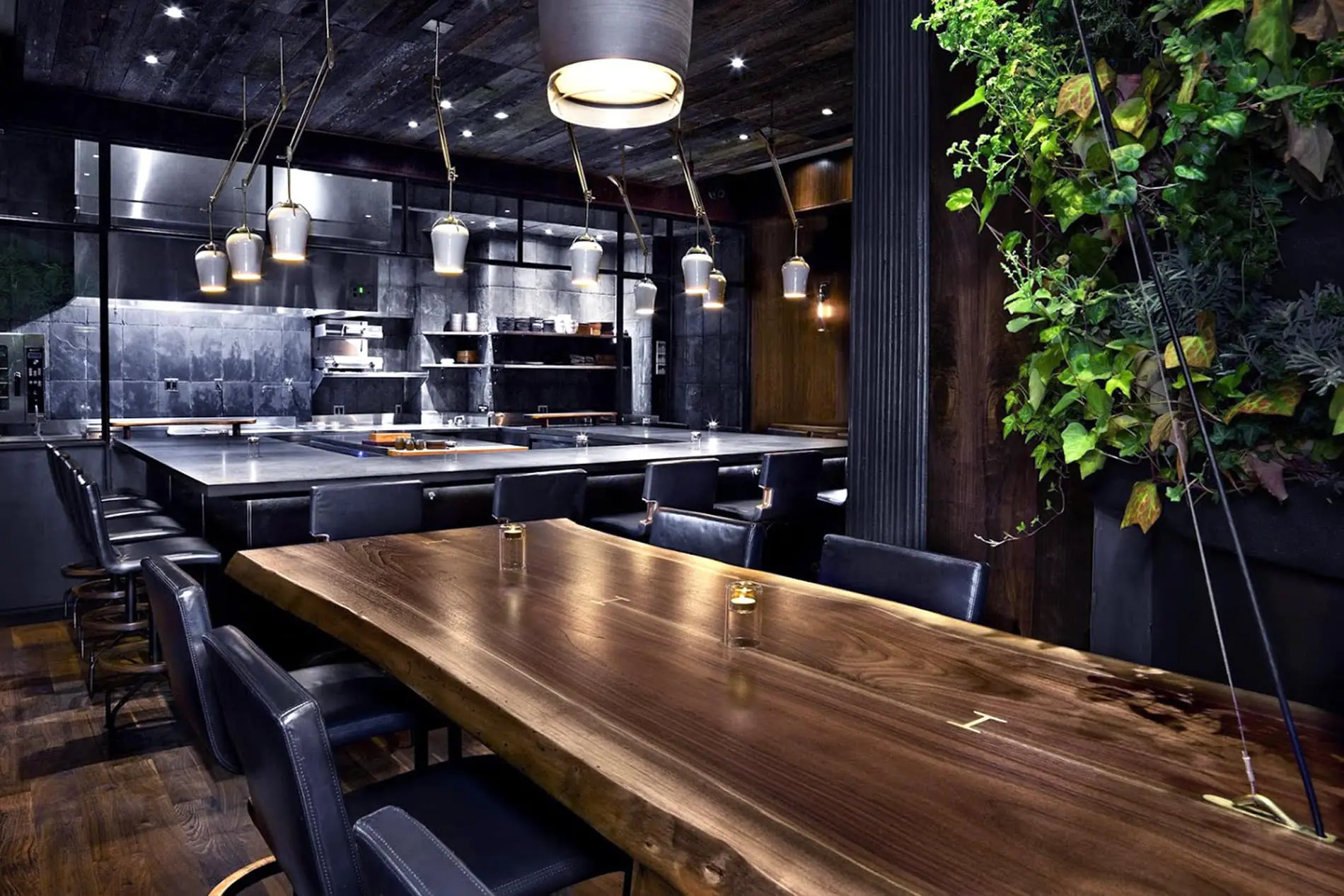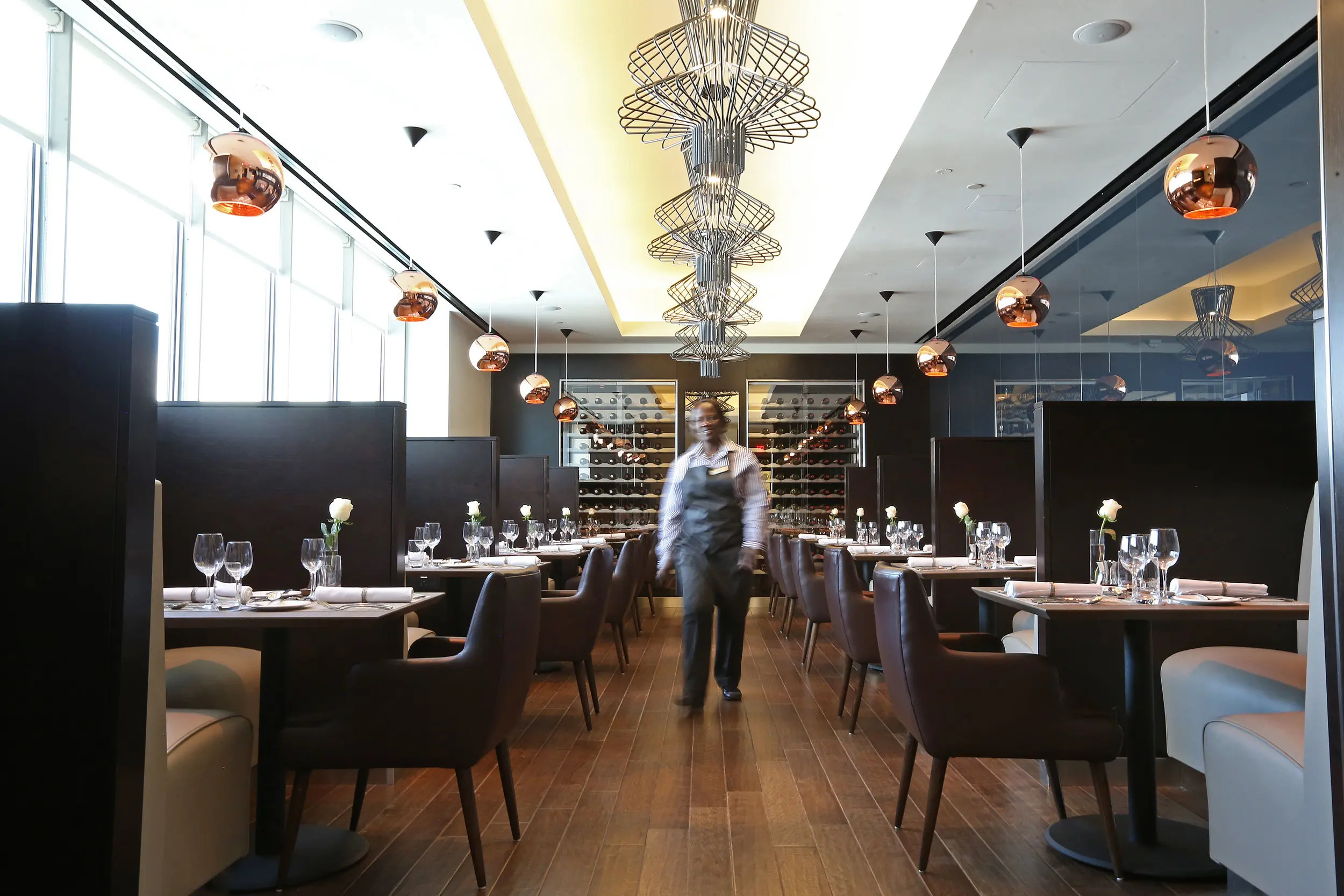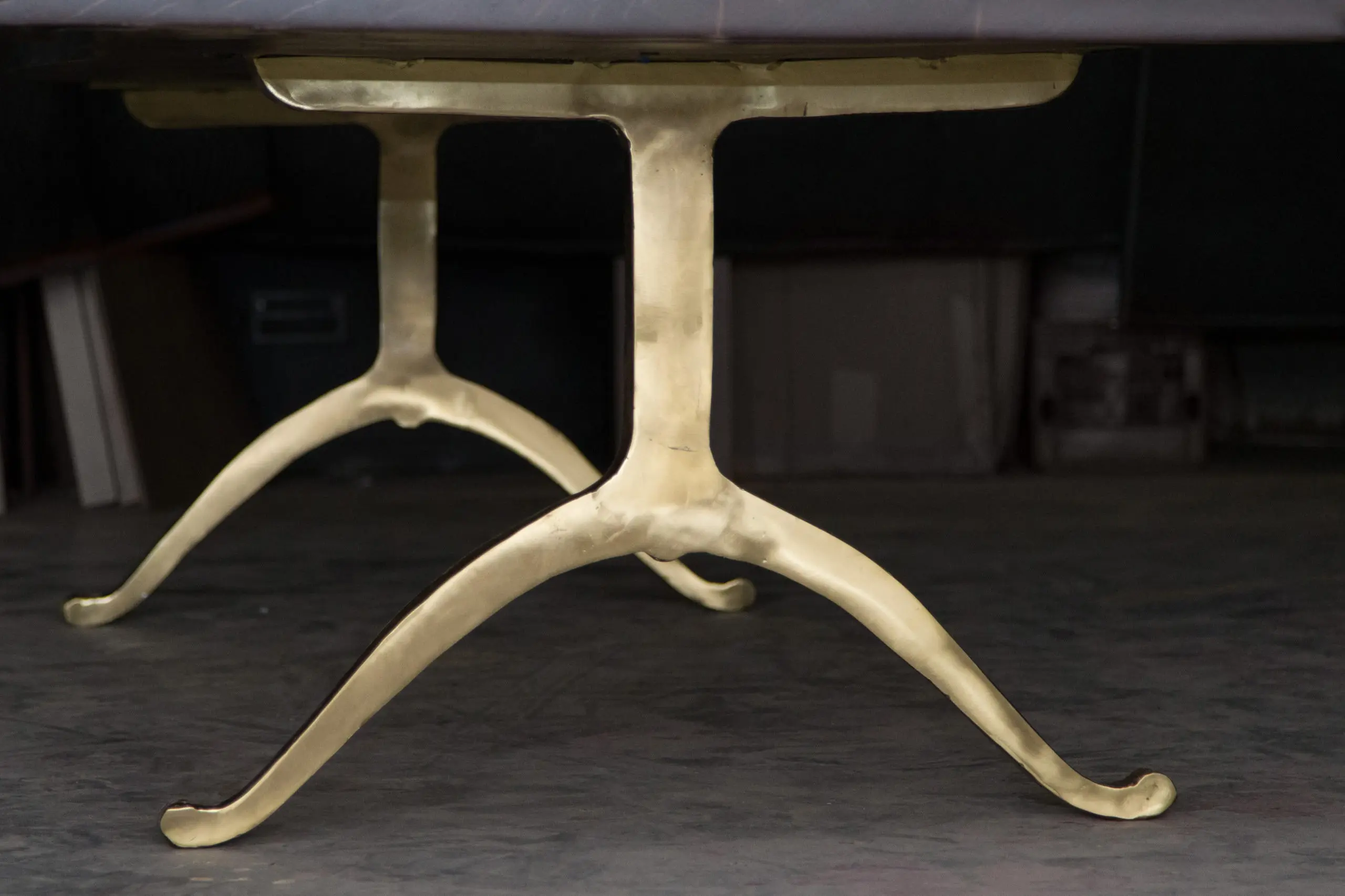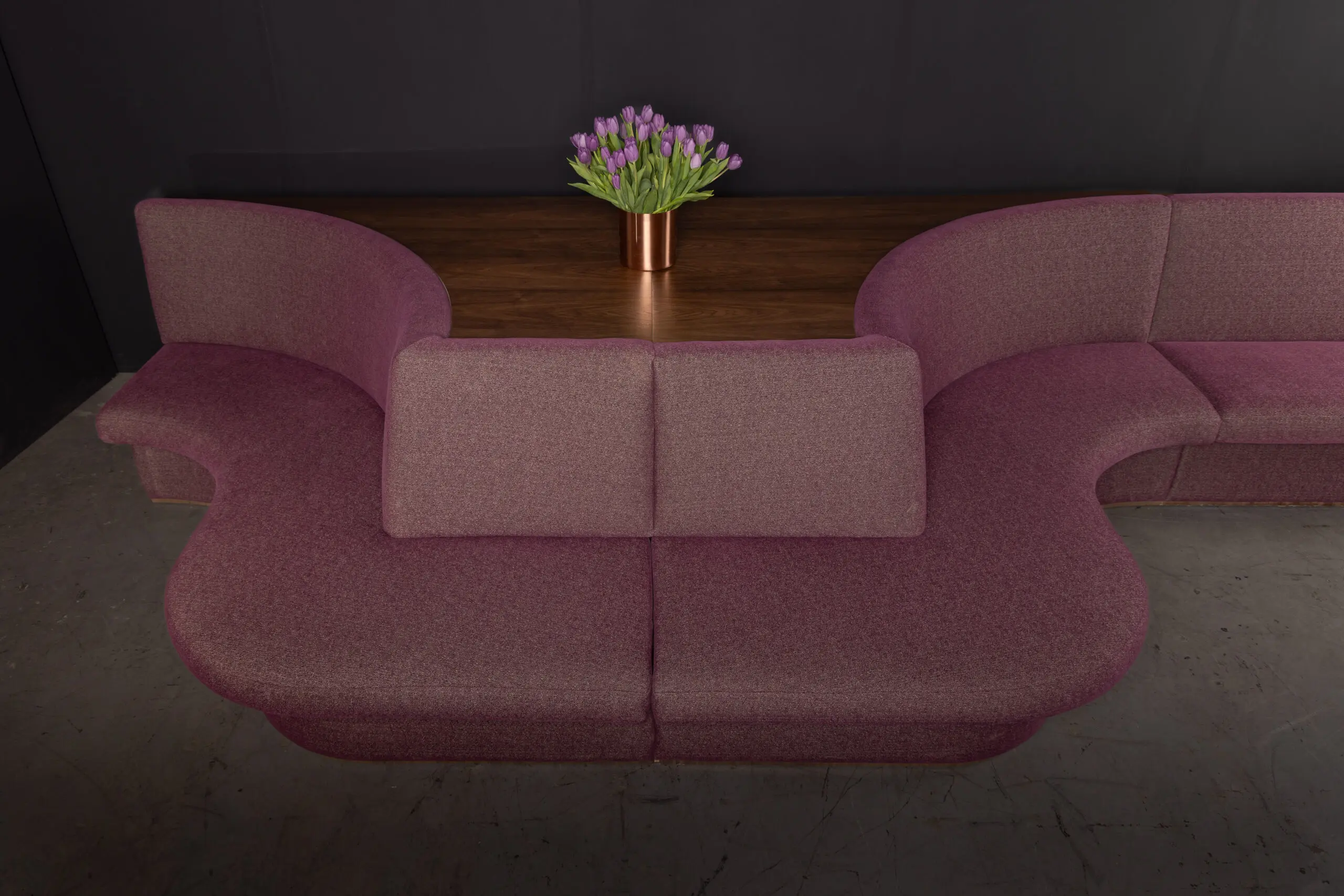The product developments that we observe daily are setting the pace for global trends in dining aesthetics and functionality. From eco-friendly furniture and communal dining to banquette seating and space-saving solutions, solid wood restaurant tables and chairs are always at the center.
Modern dining venues are no longer a homogenous group. From bold rooftop restaurants to traditional culinary landmarks, interior designers are exploring novel ways to delight guests and reinvent the dining experience. Following social and behavioral trends, aesthetic preferences shape accordingly.
Space optimization
The shared dining experience is slowly becoming the norm across many upscale venues. Restaurants the world over are hosting more than one party at the same table, dispensing with established expectations of privacy and exclusivity.
By incorporating ergonomic principles, hospitality guidelines, and novel forms, restaurants look for ways to bring people together. Here we highlight a few ways in which venues optimize their capacity and provide a delightful experience.
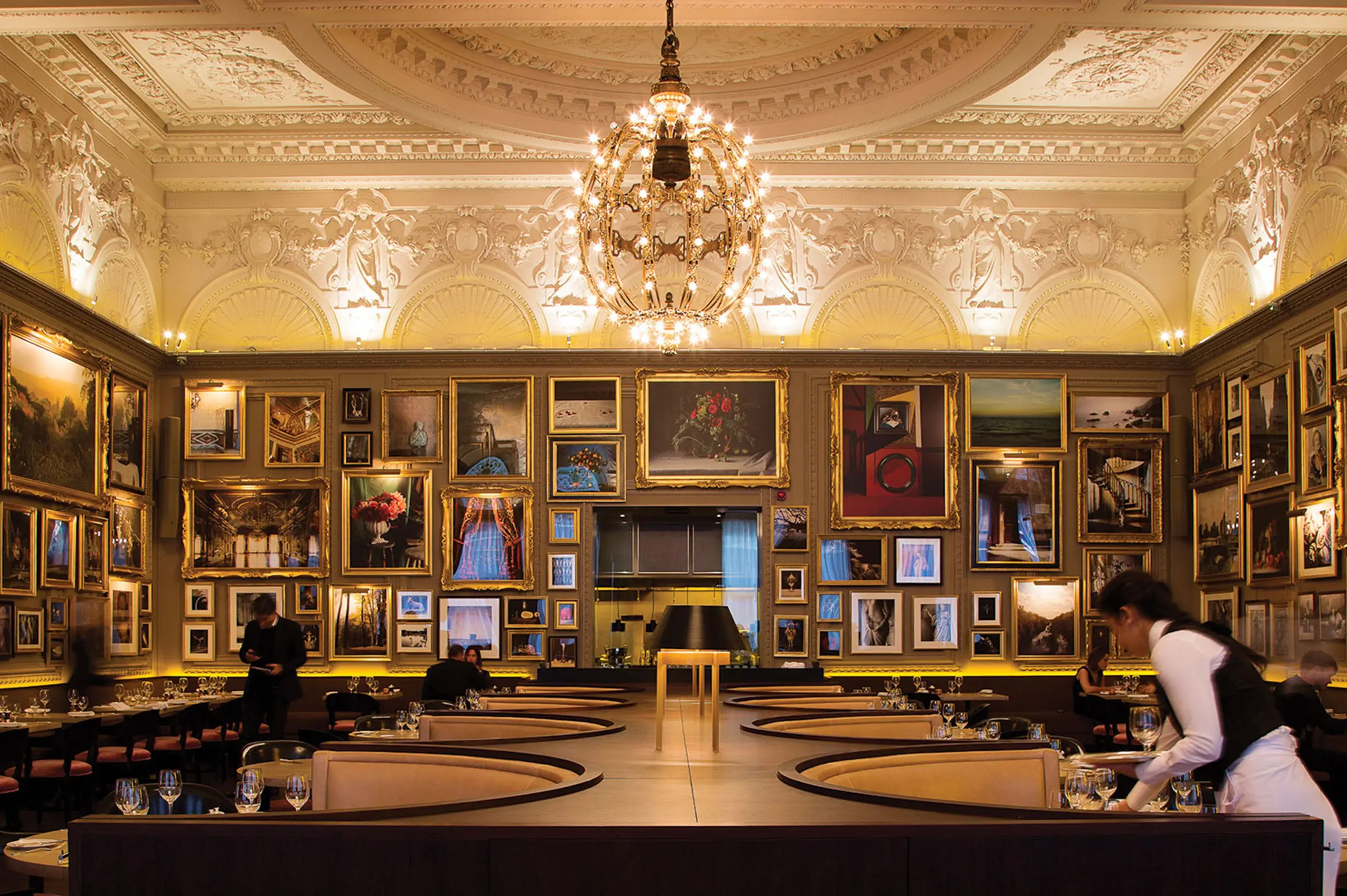
Communal dining tables
Following the pandemic, people are open to new experiences, and communal tables, which are long restaurant tables, provide a unique hospitality setting that many guests can explore. They are ideal for celebrations, hosting large parties of guests, and serving breakfast, lunch, or dinner in crowded downtown areas.
However, it is important not to use hospitality trends as an excuse to save on space, and therefore compromise the culinary experience. When seated together, guests should use between 24 to 30 inches of table edge per person and no less than 6 inches between chairs.
Long restaurant tables are gaining prominence even among high-end venues. Privacy and exclusivity are still part of the dining experience, but many guests feel comfortable sharing their space with strangers as restaurants group several parties in what is known as communal style. The idea is not necessarily novel, as it originated during the French revolution to serve as a social equalizer. James Barron, a Pulitzer recipient, writes how the concept was introduced by New York hotels during the 19th century, and subsequently resurrected during the 1080’s and the beginning of the 21st century.
The communal table, which can vary between 60 and 172 inches in length, provides a range of design options. From a waterfall base to frame legs in metal or solid wood, it is an imposing piece of furniture around which many restaurants can style their layout.
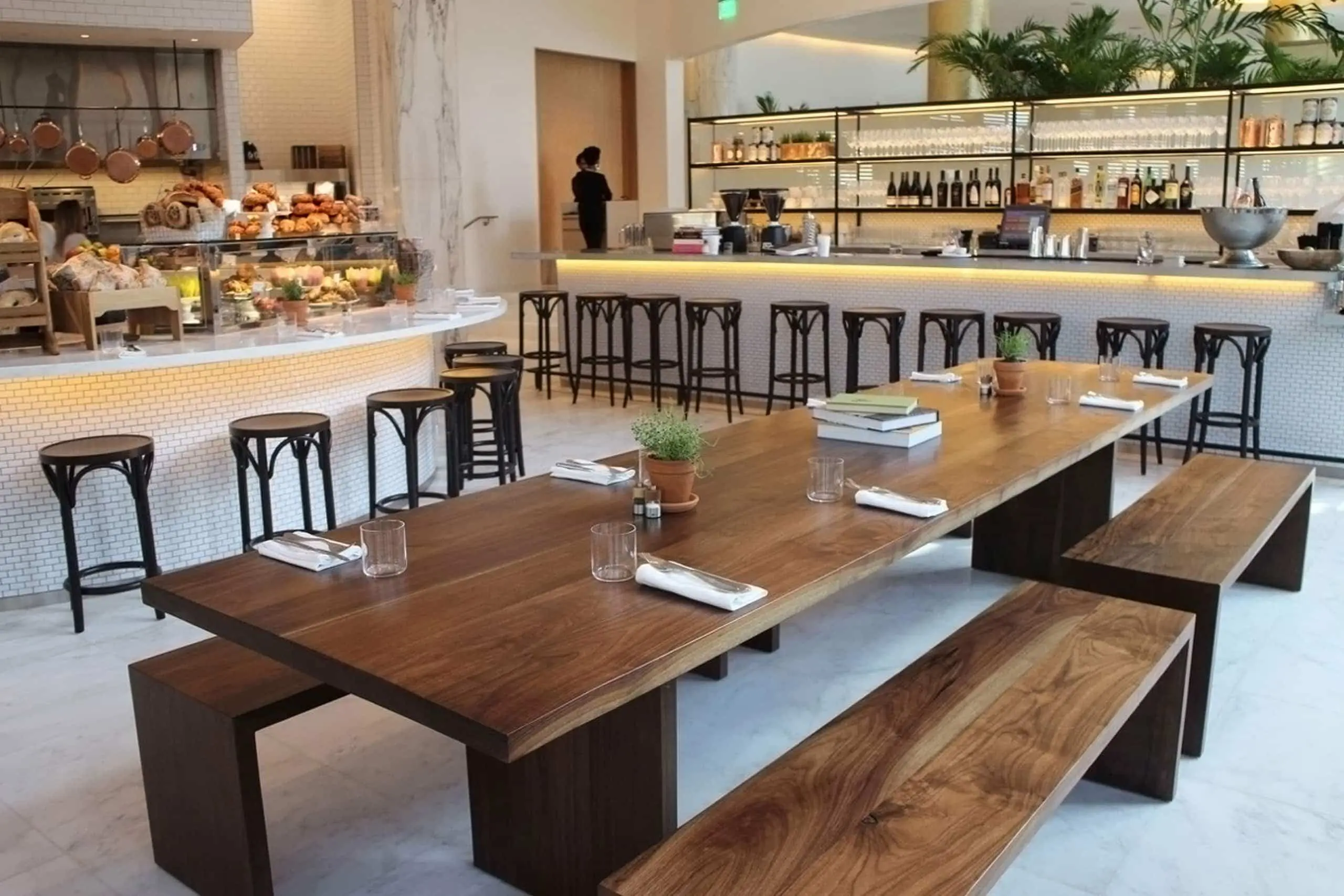
Restaurant round table
The round table is also popular, especially with venues where space is limited, as it offers a much smaller base profile while promoting a more social experience. Design trends, for the most part, converge around space optimization and novel ways to enjoy culinary exploration by bringing people together. Oval forms, however, should be carefully paired with matching chair sets, to create a consistent visual narrative. Curving the backrest, to the same curvature as the tabletop, is one of the ways in which designers shape the overall aesthetic.
To choose the best restaurant tables, venue owners must consider the occasion. Different needs and preferences demand greater stylistic diversity, as form and function move together in lockstep. The round table is versatile and stylish, but it must blend within the overall layout.
Solo diners
Restaurants often embrace the dynamic lifestyle of today, by erasing the stigma associated with dining alone. Between the rise of solo traveling and remote work, many guests are looking at the hospitality venue as a viable option for treating themselves without having to partake in a social activity.
The small round table is perfectly suitable for this ever-growing clientele, by providing ample space for dining. Serving a single meal will open another type of reservation, without sacrificing space for more guests. This model has a small base footprint, no edges, and a continual flow that doesn’t highlight three empty seats. The form is especially popular in Paris, where crowded cafes are frequently visited by solo guests. The style leans traditional but incorporates nicely irrespective of the stylistic considerations.

Biophilic furniture design
Recently introduced, organic forms are especially attractive for venues that embrace biophilic design. The live edge table is artisanal furniture at its finest – a testament to natural beauty, displaying the imposing shape of wooden slabs.
At SENTIENT, we harvest the finest premium hardwoods and allow them to air-dry for up to two years before working on them by hand. Carefully selected and professionally chiseled, they retain most of their original shape before our craftsmen polish each slab to perfection.
Black American walnut, maple, and oak are the most popular choices for solid wood restaurant tables, with a variety of finishing options.
Outdoor restaurant tables
When it comes to outdoor settings, the choice of wood favors different species, each with a unique set of visual and technical properties. Finishing options aside, teak, tigerwood, guarapa, and ipe are much more durable against moisture and insects, thanks to their tannin content and natural oils. Both protect against temperature differences and sun exposure, making outdoor restaurant tables much easier to maintain.
These properties, however, make tropical hardwoods much more difficult to drill and work with. They do not absorb finishing coats as readily as domestic hardwoods and require skilled craftsmen to shape them precisely according to architectural drawings.
Interestingly enough, certain species like teak, offer antimicrobial surfaces, which enhanced with a proper finish are ideal for outdoor dining.
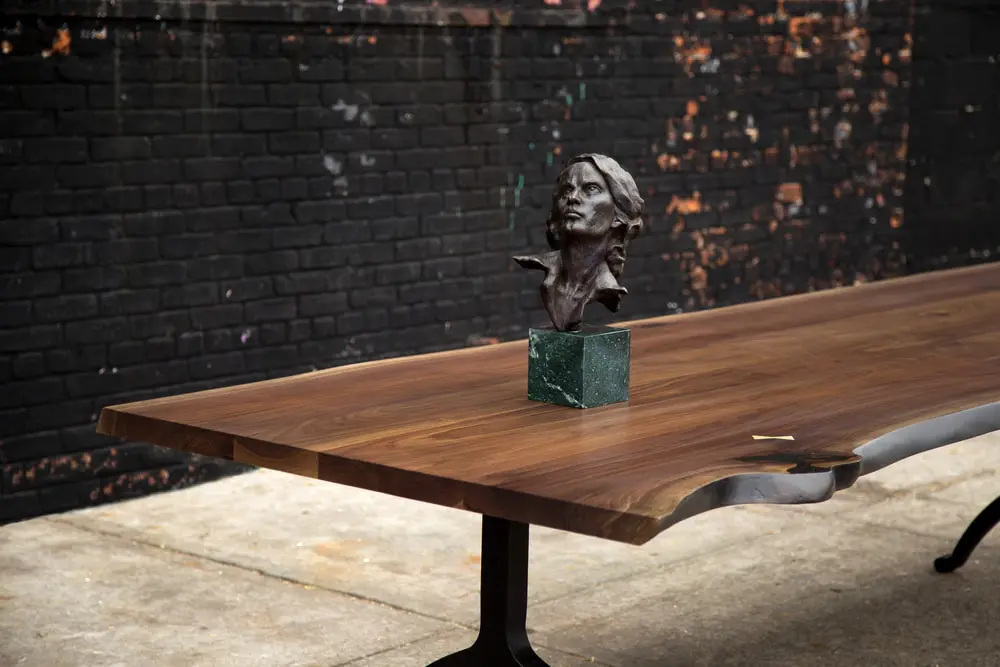
Artisanal restaurant dining tables
Solid wood tables are by far the most attractive option for upscale restaurants. However, some designers are not satisfied with the simplistic appeal of hardwood. Seeking to enrich the wooden tabletop, many furniture architects are swayed away by epoxy embellishments, so they embark on a creative journey to design unique works of art.
Epoxy river tables are especially popular in high-end hospitality spaces, as they combine several stylistic elements to weave together an artistic narrative. The traditional restaurant can benefit from these novel forms as well, as resin tables come in different colors. Organic shapes are dominant, but some designs can favor straight lines, either with inset glass or dark, unicolor epoxy.
Rarely, the tabletop itself may come secondary to the base, which becomes the focal point. The flow pedestal table, for example, can feature delicately ornamented support which is ideal for venues that lean towards a more traditional appeal. In contrast, modern restaurants can incorporate a waterfall base concept with a continuous grain pattern. Mimicking the cascading flow of nature, these models use a range of finishing options to accentuate the sophisticated grain from hardwood species such as walnut or maple.
Long restaurant tables are also an opportunity to display appealing grain patterns or live exposed edges that captivate visitors with their sheer uninterrupted length.
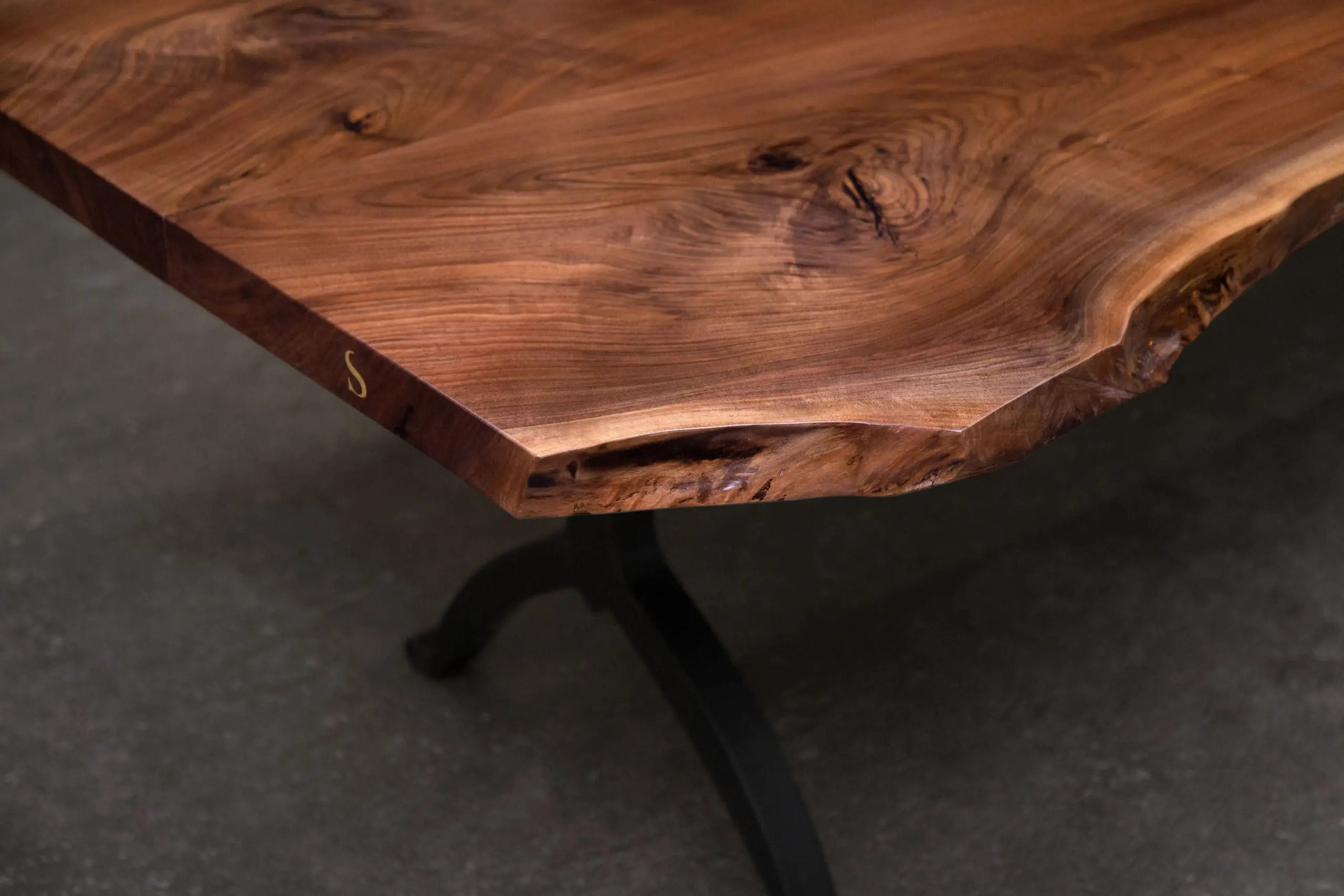
Eco-friendly furniture
Aware of our collective footprint, most of us have become critical of wasteful consumption. As we look at 2023 and beyond, the importance of sustainable furniture is one of the dominant currents in commercial design.
Restaurants and luxury hospitality venues are already committing to eco-friendly furniture, by carefully selecting manufacturers and suppliers. At SENTIENT, we take part in this profound shift, by selecting our hardwood from responsibly harvested, renewable sources.
Efforts, however, shouldn’t stop there, as supply transportation options and power tool usage may contribute to a significant carbon footprint. This is why furniture manufacturers must invest in sophisticated technologies and collaborate with local material suppliers to minimize their impact on the environment.
Reclaimed wood is another popular option for designing restaurant dining tables, as it provides a distressed and rustic look that doesn’t need heavy chemical agents, or comes at the expense of the environment. Properly treated and sealed, it will offer a durable product that is resistant to pests and decay.
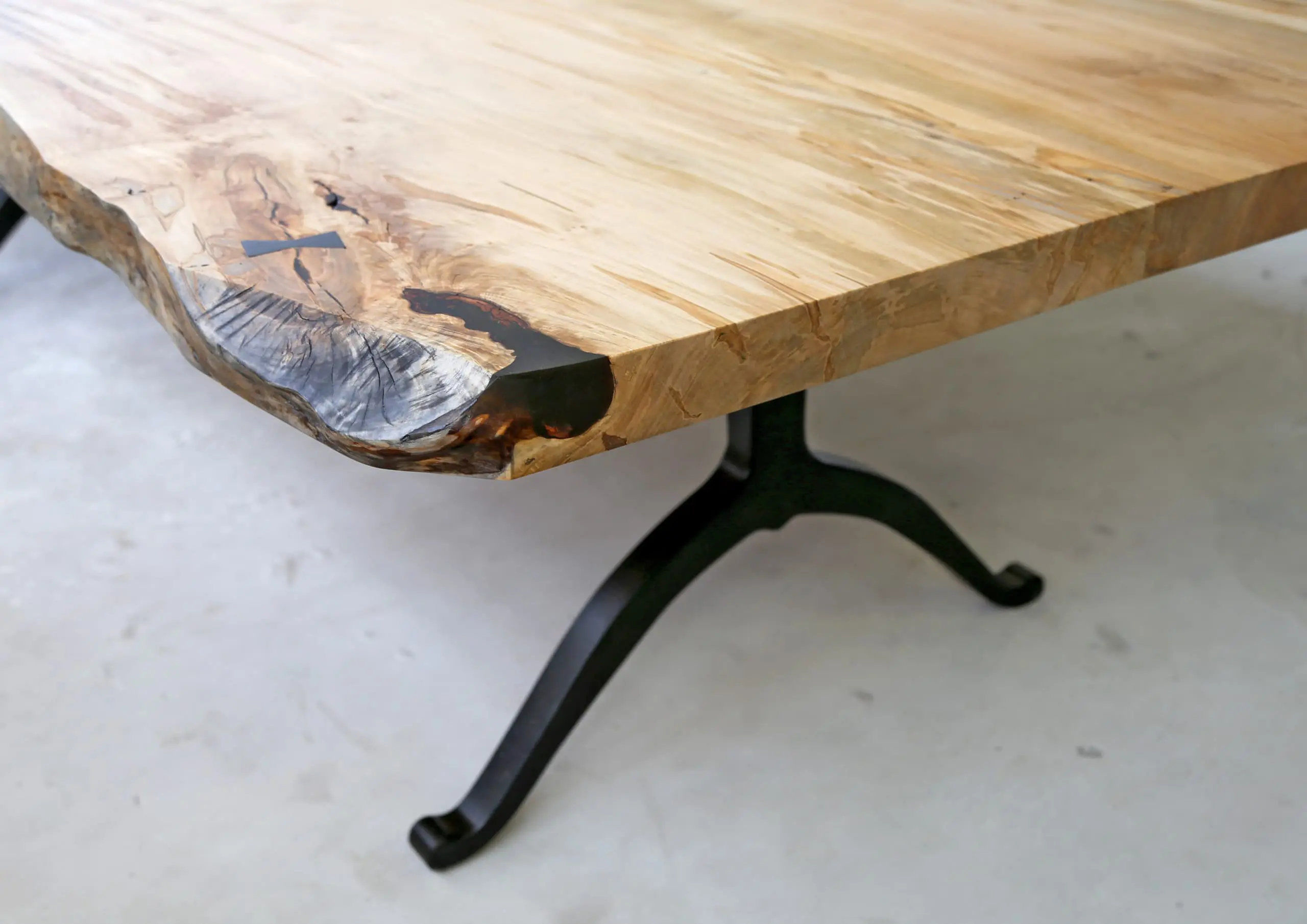
Finishing options for the best restaurant tables
Many upscale venues dispense with the use of a tablecloth. Smooth wooden surfaces can provide a distinct sheen, color depth, or an intriguing grain pattern that is impossible to ignore. For this purpose, manufacturers use several high-quality coats that are aesthetically pleasing and offer excellent durability.
The best finish for restaurant tables would depend on the choice of hardwood, but there are certain expectations to consider. The coat must be durable, thick, and strong enough to protect against scratches and heavy usage, withstanding tableware, or other personal items such as keys.
Polyurethane is a popular coat that is resistant to water and heat, with a range of color sheens from matte to high gloss. Varnish is another protective option made from drying oil, resin, and solvent, which is equally resistant to water and even alcohol. Available in a variety of sheens, it will enhance the natural grain of the wood.
Lacquer, which can be applied in multiple coats, builds a thick protective layer that also holds well against water and alcohol, offering a range of versions from clear to tinted, to provide a lustrous finish.
On the other hand, oil options, including Linseed, Danish, and Tung, though visually appealing and fast to apply, are not as resistant as some of the other protective coats. They penetrate the wood and enhance the natural grain, but won’t fare well under continual heavy use in a restaurant setting.
More creative options like cerused, and Shou Sugi Ban, provide ample protection while dramatically changing the appearance of the wood surface. The first uses a wire brush to expose the wood grain before a contrasting color is applied to create visual interest. The second, which is a traditional Japanese method of finishing wood furniture, involves charring the surface of the tabletop, before finishing it with natural oil to dynamically highlight the grain.
The best restaurant tables should offer as much protection from continual use as possible, all the while promoting visual interest through a unique pairing of hardwoods and finishing solutions. With easy-to-clean surfaces and exceptional durability, a quality table can entertain guests for decades, preserving its aesthetic appeal.
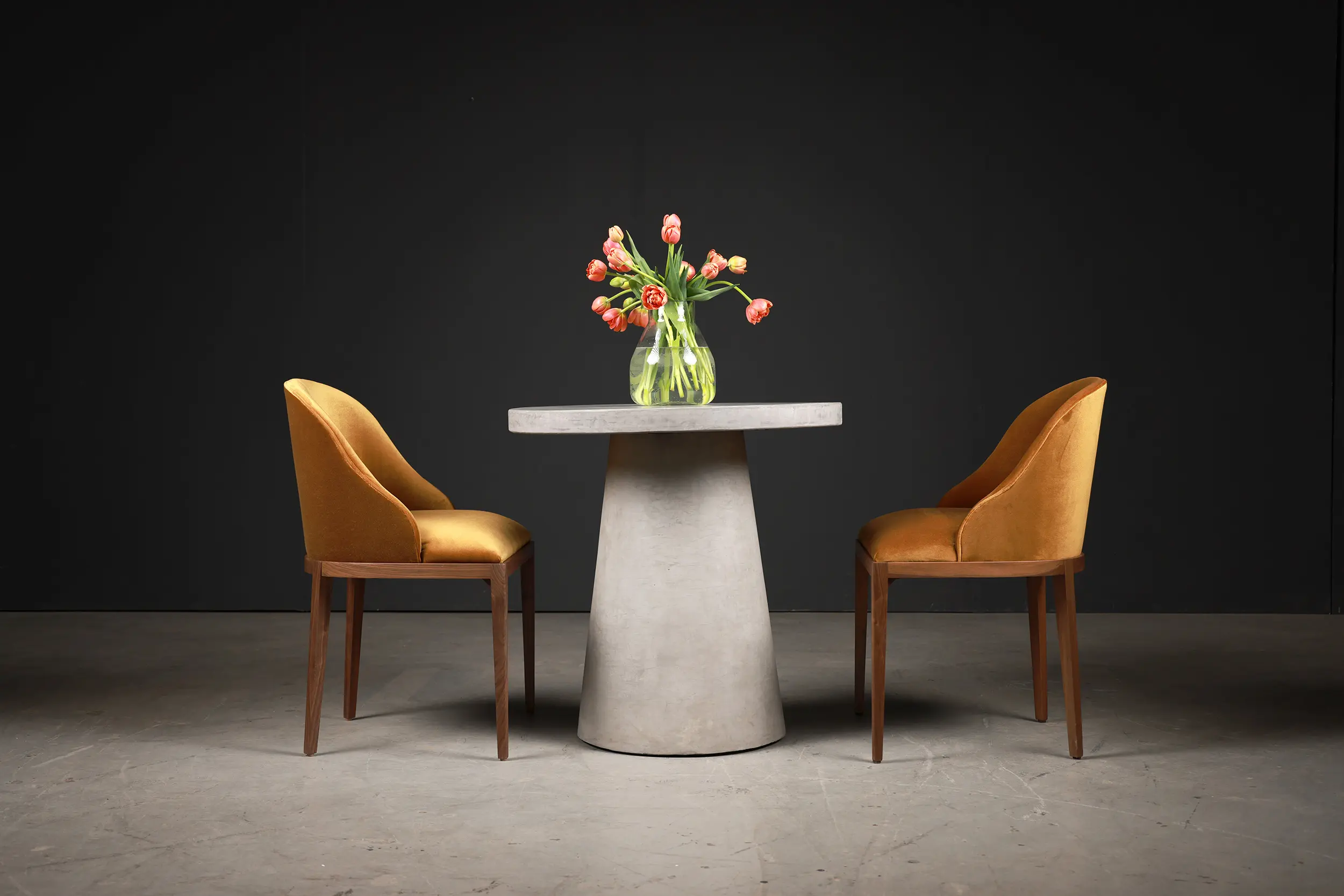
Upcoming trends for the best restaurant tables
Form, as with most trends, invariably follows function. Therefore, it is vital to observe hospitality developments as a whole, especially in how guests behave. Their dining preferences inform designers and architects of future product developments, shaping the restaurant trends for tables, seating furniture, and luxury items.
The best restaurant tables fall in line with these industry preferences, irrespective of whether they revolve around classic traditional, minimalism, or industrial chic. From the use of metals, and reclaimed wood which create a rustic appearance, to the timeless elegance of solid hardwoods, restaurant dining tables evolve with impressive variety.
SENTIENT follows these trends as we adjust our manufacturing process to create luxury restaurant furniture at scale and the right cost. We collaborate with architects and interior designers to bring any creative vision to life, shaping the trends of upscale hospitality with exceptional restaurant tables that are the focal point of any environment.

